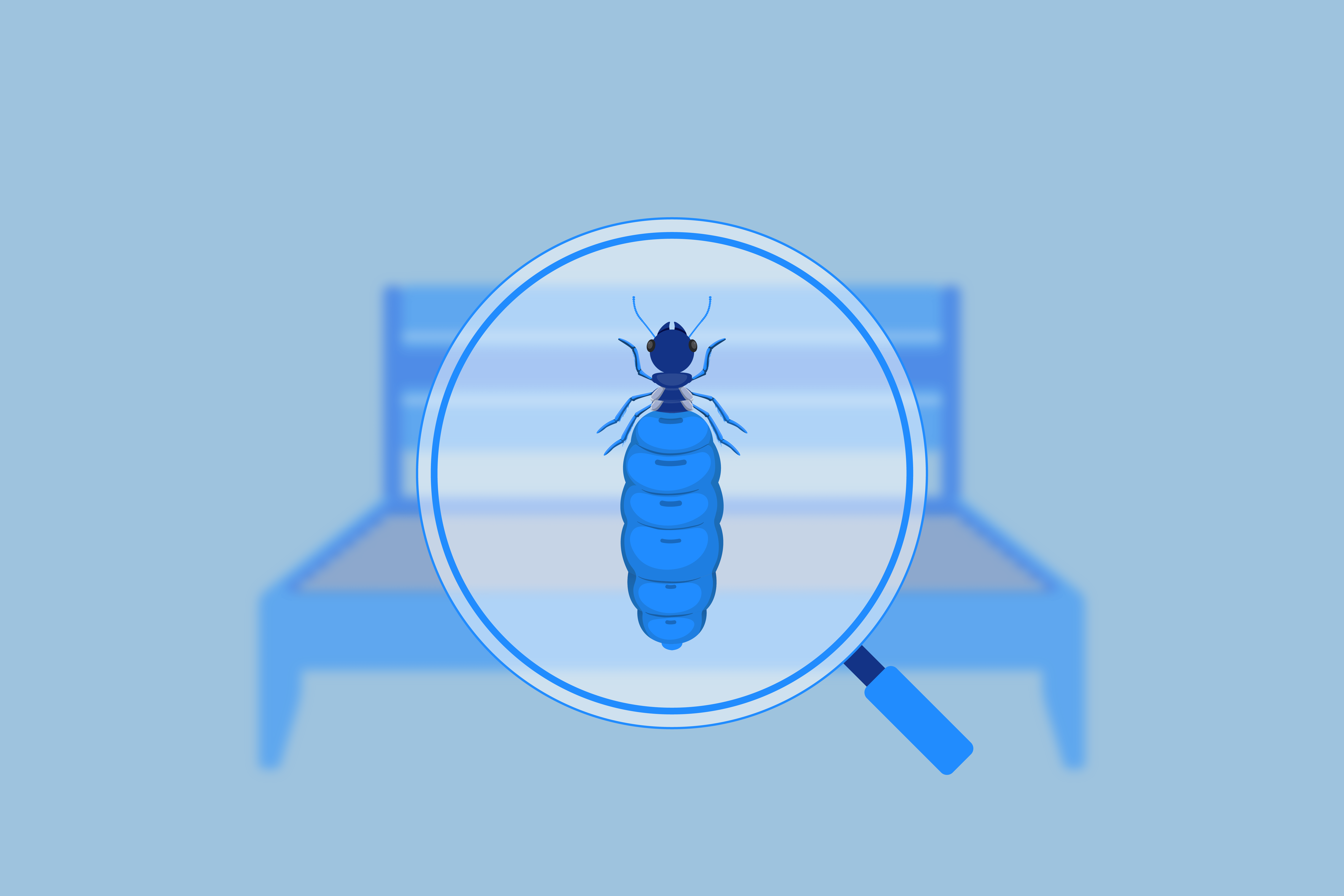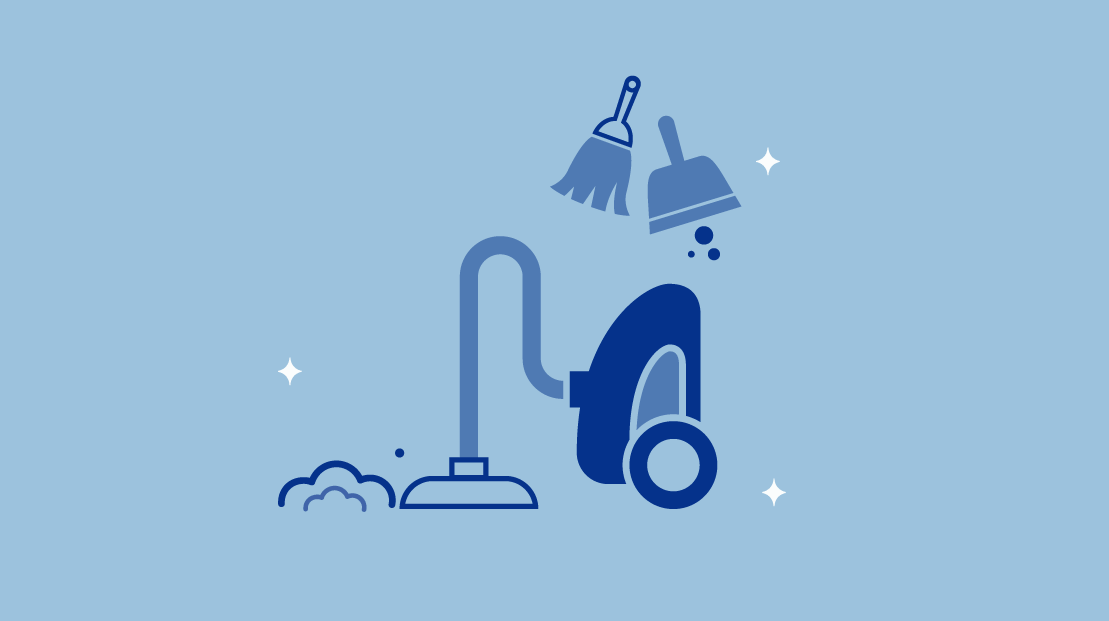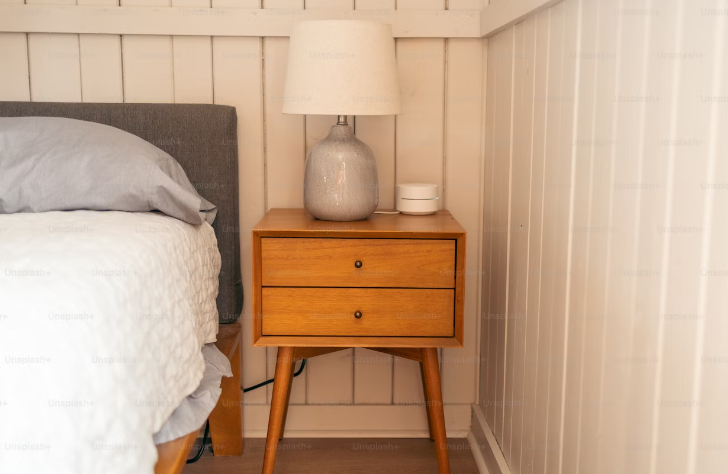Key Takeaways
- Termites and Bed Invasion: While it’s highly unlikely for termites to infest your bed, understanding termite behavior and their potential to cause structural damage to wooden elements in your home is crucial.
- Early Detection is Key: Regular inspections for signs of termite activity, such as discarded wings, mud tubes, and damaged wood, are essential for early detection. Prompt action can prevent extensive damage and costly repairs.
- Professional Intervention: If you suspect a termite infestation, seeking professional help for a thorough inspection and appropriate treatment is vital. Professional pest control companies can provide tailored solutions to eliminate existing colonies and prevent future infestations, safeguarding your home from termite damage.
Have you ever found yourself waking up to mysterious bites and wondering if termites are invading your bed? While it’s highly unlikely for termites to infest your sleeping space, it’s essential to know the signs of termite infestation and how to prevent them from damaging your home.
Termites are small, wood-eating insects that live in large colonies. They usually infest wooden structures such as walls, floors, and furniture, causing significant damage over time. Termite damage can be costly to repair and may compromise the structural integrity of your home, making early detection crucial.
In this article, we’ll explore whether termites can get in your bed, identify early warning signs of termite infestation, and provide tips on preventing and eradicating termite colonies in your home. Let’s dive in and discover the secrets of termite behavior, infestation signs, and control measures you need to know.
Before delving into the specifics, we’ll start by exploring whether termites can get in your bed and discussing the signs of a possible termite infestation in your sleeping space.
So, can termites infest your bed? Let’s find out!
Understanding Termite Behavior
Termites Verified Source Environmental Protection Agency (EPA) Works to control/prevent natural and manmade disasters. View source are tiny insects that feed on cellulose-based materials such as wood, paper, and cardboard. Lookwise, they are often confused Verified Source Environmental Protection Agency (EPA) Works to control/prevent natural and manmade disasters. View source with ants. Their eating habits make them one of the most destructive pests that can cause significant damage to your property if not controlled.There are two main types of termites: subterranean and drywood termites. Subterranean termites live in colonies in soil and build mud tubes to connect their nests to food sources. Drywood termites, on the other hand, live inside the wood they infest, making them difficult to detect.
To control a termite infestation, it’s crucial to identify the type of termite and the extent of the infestation. Common signs of an active termite infestation include termite droppings (also called frass), discarded termite wings, and visible damage to wooden structures.
Effective termite control and extermination involves eliminating the existing colony and taking steps to prevent future infestations. Methods for termite treatment include baiting systems, chemical treatments, and fumigation. Proper maintenance of wood structures and regular termite inspections can also help detect early signs of termite activity.
Overall, understanding termite behavior and habits is crucial in managing and preventing termite damage to your property. Knowing what termites eat, how they operate, and what signs to look for is essential for keeping your home termite-free.
Signs of Termite Infestation
Termites can cause significant damage to your home, and early detection is key to preventing extensive harm. Keep an eye out for these signs of termite infestation:
Termite Swarmers
These winged insects are a sure sign of a termite colony nearby. Termite swarmers typically appear in the spring and summer months and may be mistaken for flying ants.
Subterranean Termites
These termites live underground and can cause major damage to your home’s foundation. Look for mud tubes or tunnels on exterior walls, as these are signs of a subterranean termite infestation.
Regular Termite Inspections
It’s important to schedule regular termite inspections with a professional pest control company. These inspections can detect early signs of infestation and allow for timely treatment.
Active Infestation
If you notice signs of an active termite infestation, such as damaged or hollowed-out wood, discarded wings, or termite droppings, it’s important to take immediate action to rid your home of these pests.
Identifying Termite Droppings
Termites can cause serious damage to wooden structures, but they also leave clues of their presence through their droppings, also known as frass. Formosan termites and drywood termites are two common types of termites found in the United States. They swarm to form new colonies, and their droppings can be distinguished from other types of debris.
Termite droppings from Formosan termites are typically larger and have six distinct sides with rounded ends. These droppings are commonly found near infested wood areas, especially during peak termite activity periods. Drywood termite droppings are typically tan to dark brown in color and are found near their nesting sites, such as in attics or wall voids.
Even if you don’t see their droppings, you might still notice their presence in an uptick of asthma symptoms. Verified Source National Library of Medicine (NIH) World’s largest medical library, making biomedical data and information more accessible. View source If these droppings are disseminated by your air conditioning and heating systems, they can inflame your respiratory system.
If you suspect termite droppings, it’s important to get a professional inspection to confirm the presence of termites and assess the extent of the infestation. Prompt action can prevent further damage to your home.
Inspecting for Termite Activity
Termites can be quite sneaky and often go undetected until significant damage has been caused. To prevent this from happening, it’s important to inspect regularly for signs of termite activity around your house.
Termites prefer softwood, particularly moist and damaged wood that is easy for them to feed on and nest in. It’s important to take preventative measures to avoid attracting termites to your home.
Hiring a trusted pest control company for regular inspections and treatment is the most effective way to prevent termite damage to your property.
Understanding Termite Damage
It’s important to identify termite damage early on, as finding termites in their swarms is not always easy. Signs of termite damage include hollowed-out wood, mud tubes, and termite droppings. If you suspect you have a termite problem, consider enlisting the help of a pest control company to locate and eradicate the infestation.
Timely action is crucial when dealing with termites. Finding them early can prevent them from establishing a large colony, ultimately saving you from extensive damage and costly repairs. If you have received a termite letter or suspect you have an infestation, take immediate action to deal with the problem before it gets worse.
Differentiating Termites from Other Pests
Termites are often mistaken for other pests like ants in the bedroom, bed bugs or even spiders. While these insects may be found in homes and even in your bedroom, there are distinct differences between their behaviors and characteristics.
One key difference is the damage they cause. Termites are known for causing damage to wooden structures like wood paneling and framing, whereas bed bugs in a mattress and spiders in the home do not. If you observe any damaged wood in your home, it’s important to inspect it for termite activity.
Another difference is the presence of spider webs or bed bug bites. If you’re experiencing either of these, it’s more likely that you have spiders in your bedroom or bed bugs in your home, respectively. Termites do not construct webs and do not feed on human blood.
Early Warning Signs of Termite Problems
Termite problems can cause extensive damage to your home, so early detection is essential. There are several early warning signs to look out for, including:
- Termite Activity: Keep an eye out for swarming termites or discarded wings, which could indicate an active termite colony nearby.
- Dead Wood: An accumulation of dead wood near your home could attract termites looking for a food source.
- Plant Material: Termites also feed on plant material such as mulch and fallen leaves.
- Wood Damage: Be sure to inspect wooden structures for signs of damage, such as hollow-sounding wood, blistering, or sagging.
If you notice any of these signs, taking action immediately is crucial. Contact a professional pest control company for an inspection and treatment plan to prevent the problem from becoming more severe.
Conducting a Professional Termite Inspection
While it’s possible to detect some signs of termite infestation on your own, we recommend a professional inspection to assess the extent of the infestation and provide customized recommendations for termite control. Verified Source National Library of Medicine (NIH) World’s largest medical library, making biomedical data and information more accessible. View source
A professional inspector will thoroughly examine the wooden structures in and around your home, checking for signs of wood damage, peeling paint, and moisture buildup. They may use specialized equipment such as moisture meters and infrared cameras to detect hidden infestations.
Once the inspection is complete, the inspector will provide you with a detailed report outlining their findings and recommendations for pest control. This may include treatment options such as fumigation or liquid treatments, as well as preventative measures to keep termites from returning in the future.
Protecting Your Bed from Termites
While the idea of termites in your bed may seem like a nightmare, it’s highly unlikely to happen. However, it’s important to take precautions to protect your bed and sleeping space from a termite infestation.
Reinforce Your Home’s Foundation
Termites typically enter homes through cracks or gaps in the foundation. Ensure the foundation is sealed properly, and any damaged wood is replaced immediately. Check the exterior walls for signs of termite activity, such as mud tubes or damaged wood.
Monitor for New Termite Colonies
Regularly inspect your home’s wooden structures for signs of termite activity, such as discarded wings, termite droppings, or mud tubes. If you notice a termite colony in your yard or nearby, take immediate action to prevent them from invading your home.
Take Preventative Measures Against Termite Entry
Prevent termites from entering your home by eliminating sources of moisture and food. Fix leaky pipes, reduce humidity levels, and remove any dead wood or plant material from your property. Consider using termite-resistant materials for new construction or renovations.
By following these steps and remaining vigilant for signs of termite activity, you can keep your bed and home safe from these destructive pests.
Dealing with a Termite Infestation
If you suspect a termite infestation in your home, it’s essential to take swift and decisive action to eradicate the colony and prevent further damage to your property. Here are some effective methods:
Eliminate the Colony
The first step is to rid your home of the termite colony. This may involve treating the affected area with insecticides or using bait traps to lure and eliminate the termites. Professional pest control companies can also offer more invasive treatment options, like fumigation, to get rid of the entire colony.
Treat Infested Walls and Drywall
If termites have already infested your walls, it’s critical to treat them as soon as possible. One option is to inject insecticides directly into the affected areas. Alternatively, the infested drywall may need to be removed and replaced.
Seal Crevices or Entry Points
Once the infestation is under control, seal any crevices, cracks, or entry points in your home where termites may have entered. This includes gaps in your home’s foundation, around doors and windows, and between pipes and electrical conduits. This will prevent future infestations.
More to Watch Out for
Look out for more than just termites in your bedroom. Check for bed bugs, spiders, fleas, ants, scabies mites, lice, and cockroaches. Stay aware to keep your sleeping area free from pests.
While they are not conventional pests, it’s also important to handle mold and mildew carefully if they show up in your bedroom. They can impact your breathing and cause severe health issues if left unattended.
- What Attracts Bed Bugs and How to Prevent Them
- What Do Bed Bugs Look Like?
- Signs You Have Fleas in Your Bed
- Should I Be Concerned About a Tick in Bed?
- Should I Be Concerned About a Silverfish in Bed?
- How To Treat Your Mattress For Lice
- How to Get Rid of Flies in the Bedroom
- How to Get Rid of Scabies From Mattress
- What to Do About Bees in the Bedroom
- How to Get Rid of Mosquitos in the Bedroom
- How to Keep Cockroaches out of the Bedroom
- How to Keep Mice Out of Your Bed
- How to Keep Centipedes Out of Your Bed
- What to Do if a Bat Gets into Your Bedroom?
- Mold in Bedroom: Do You Need to Worry?
- How to Spot Mold on Mattress & What to Do About It
FAQs
How do you tell if termites are in your walls?
Signs of termites in walls include hollow-sounding wood, mud tubes along walls, discarded wings, and small exit holes. Tap on suspected infested wood, and if it sounds hollow, it may indicate termite damage. Regular inspections by professionals can also help detect early signs of termite infestations.
What are the signs of having termites?
Signs of termite presence include mud tubes on walls, discarded wings near windows, doors, or light fixtures, and the appearance of small, maze-like tunnels in wood. Additionally, damaged or hollow-sounding wood and the presence of termite droppings, known as frass, are indicators of a potential termite infestation. You might even experience asthma symptoms from the termite droppings.
Do termites go away on their own?
Termites do not typically go away on their own. Once established, termite colonies can persist and cause significant damage. Professional intervention, such as termite treatments and preventive measures, is essential to eliminate termite colonies and protect your property.
Can termites in the walls make you sick?
Termites themselves do not pose a direct health risk to humans. However, the presence of termites can compromise the structural integrity of your home, leading to potential safety hazards. Additionally, the use of certain chemicals in termite treatments may pose health risks, highlighting the importance of professional pest control.
Is it OK to sleep in a room with termites?
Termites themselves do not pose a direct threat to occupants’ health and you should be able to sleep fine for a night. However, addressing the termite infestation promptly is crucial to prevent potential structural damage to the room or the entire property. It is essential to address the infestation promptly to prevent further harm to the building’s integrity.
Why are termites in my bedroom?
Termites may infest bedrooms if there is a nearby food source, such as wooden furniture or structural elements. Moisture issues, like water leaks, can also attract termites. Regular inspections, addressing moisture problems, and using termite-resistant materials can help prevent infestations in bedrooms.
Should I be worried if I see a termite in my house?
Seeing a single termite may indicate a larger colony nearby. While immediate panic may not be necessary, it’s crucial to conduct a thorough inspection and seek professional help if needed. Early detection and intervention can prevent extensive damage to your home.
Conclusion
It’s highly unlikely that termites will invade your bed, but they can cause significant damage to other wooden structures in your home. To protect your property from termites, it’s crucial to be aware of the common signs of an infestation and take timely action.
Regular termite inspections by a professional pest control company can help detect a termite problem early on, while effective treatment options can eliminate termite colonies and prevent future infestations.
By understanding termite behavior, and common signs of infestations, and conducting regular inspections, you can protect your home and sleeping space from termites. Don’t wait until it’s too late to rid your home of these destructive insects. Take preventative measures and act quickly upon discovering any signs of a termite problem.
About the author
Geoff McKinnen is a writer focusing mainly on the healthcare industry and has written articles on everything from foods to help you lose weight to the connection between Alzheimer’s and sleep. Geoff’s passionate about helping readers improve their well-being to lead happier lives. Outside of work, Geoff enjoys cycling and hiking and believes that by leading a healthy lifestyle, he can help others do the same.
View all posts





